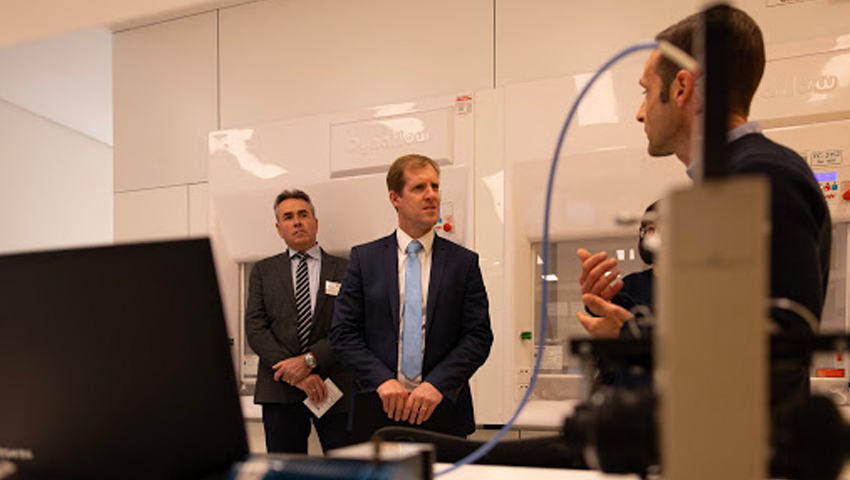The University of Adelaide and technology company Silanna are set to open two new facilitates to house advanced materials research and development.
The University of Adelaide’s Advanced Materials Facility and Australian technology company Silanna’s QuFab facility have been established to support advanced materials research, design, and fabrication.
The facilitates, located on thew University of Adelaide’s North Terrace campus, will house the modification and creation of more energy efficient and environmentally friendly materials used for the construction of homes, and the production of vehicles and gadgets.
“Today’s undergraduates and postgraduates will undertake their studies in the Advanced Materials Facility at the same time as having the unparalleled opportunity to tap into the minds of the experts working at QuFab,” the University of Adelaide’s head of the School of Chemical Engineering and Advanced Materials, Professor David Lewis, said.
“Our students will have access to a diverse range of facilities in which they will discover the world of advanced materials through engineering research, educational teaching and training activities, with a strong focus on new materials for energy, catalysis and semi-conductors.
“These labs are where the future minds of the advanced materials industry will be trained.
Professor Lewis added, “In the same way that the brightest minds will be attracted to study here, some of the world’s top research talent in this area is also being attracted to work here.”
Silanna chief scientist Dr Petar Atanackovic said the Brisbane-based company would focus on designing and producing prototypes of the next generation of semi-conductors.
“At QuFab here in Adelaide, we are designing and manufacturing atomically engineered crystalline semiconductors using applied quantum mechanics and proprietary atomic layer deposition technologies,” Dr Atanackovic said.
“These new compositions of matter are then fabricated into electronic and optoelectronic devices for applications including power conversion and extreme ultraviolet light detectors and emitters – we are unlocking new technology areas of fundamental physics, chemistry, electronics and photonics.”
Dr Atanackovic continued, “Silanna’s UV-C light emitting diode (LED) technology is already commercialised and the work here at QuFab is building the next generation of improved materials and technology. To achieve these goals, we need talented and highly skilled people, and it is one of the main reasons we have embedded ourselves into the University of Adelaide.
“Fortuitously, these UVC devices may be used to deactivate surfaces contaminated by COVID-19 and are already being used to sterilise air, water and surfaces by virtue of UVC interacting advantageously with an organism’s DNA.”
Dr Atanackovic, who studied at the University of Adelaide and pursued a career in Silicon Valley, said he aims to give back to the community through his work at the facility.
“A whole ecosystem is beginning to appear, not only with large infrastructure investment like QuFab, but also having the support of the university in building an environment for knowledge creation in this new area of quantum engineering,” the chief scientist added.
South Australian Minister for Trade and Investment Stephen Patterson said the new facilities would enrich the state’s economy, with global semiconductor sales estimated to be worth $490 billion in 2018.
“Innovation, global connectivity, hi-tech research and design into this cutting-edge technology, will have a snowball effect,” Minister Patterson said.
“South Australia’s hi-tech sector is gaining a worldwide reputation and partnerships like this enable our state to have the rare ability to rapidly scale to meet the skilled workforce needs of global technology companies.
“The investment in research, design and education here and now, will have far reaching and long-term benefits for our economy and society.”
[Related: University of Queensland partners with US DoD on pain research]








